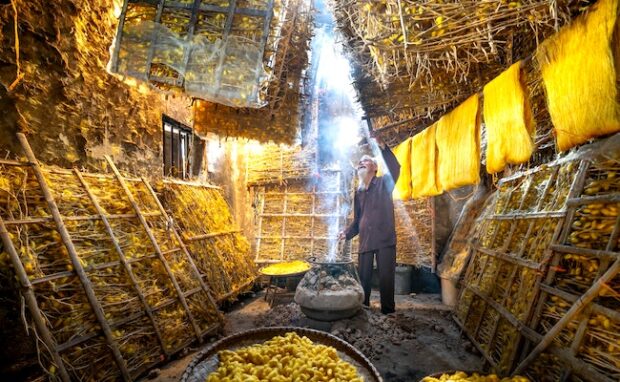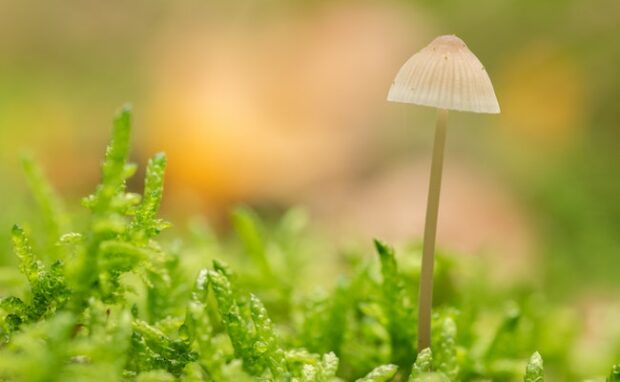Worms spin spider silk as a tougher, green alternative to synthetic fibers
Chinese scientists have genetically modified silkworms to produce spider silk, creating a fiber six times more durable than Kevlar bulletproof vests. This breakthrough marks the first time silkworms produced full-length spider silk proteins. Soon, the world may use it as a more sustainable alternative to synthetic fibers for numerous industries.
China was the first country to weave clothing from silkworm fibers. It seems the country developed its ancient art to produce tougher fibers with wider applications. For example, the world might apply this material to military, aerospace, and biomedical engineering purposes. More importantly, it could be another way to an eco-friendly future.
This article will discuss how Chinese scientists genetically altered silkworms to produce spider threads. Later, I will cover a similar project involving greener alternatives to specific materials.
How did worms produce spider silk?
Junpeng Mi, a Donghua University biotechnologist, inserted a specific gene into silkworms to allow them to produce spider silk. It is the first time scientists have merged the benefits of silkworm and spider threads after years of research.
Science.org explains both materials have opposing perks and flaws. People have been unwinding silkworm cocoons for fabrics, but they break easily.
Conversely, spider silk is flexible, durable, and strong, but arachnids are hard to cultivate. Keep 100 spiders in a confined space, and they will eventually attack one another until you only have a couple left.
Meanwhile, 100 silkworms will peacefully coexist in a factory. That is why scientists wanted to make worms produce spider silk. Fortunately, Mi’s team succeeded in this endeavor.
The scientists extracted MiSp from the Araneus ventricosus, an orb-weaving East Asian spider. Then, they used CRISPR to insert the MiSp spider silk proteins and replace the silkworm’s similar gene.
As a result, the transgenic silkworms produced fibers with high strength, which measures the amount of stress a material can withstand without deforming. Moreover, they have high toughness, which estimates how much energy they can absorb through stretching before rupturing.
You may also like: How does satellite internet work?
Justin Jones, a biologist who engineers spider silks at Utah State University, told Science.org it was surprising that MiSp-based threads were flexible. The protein usually produces strong fibers, not flexible ones.
“But it does make a flexible fiber when you put it in a silkworm,” he added. The website says Mi and his colleagues must cross-breed their experimental silkworms with commercial strains to mass produce this special spider silk fiber.
Mi also plans to make the research-grade fiber stronger and stretchier. He plans on designing silk proteins that incorporate non-natural amino acids to add new properties to the fiber.
Another green alternative to fabrics
Spider silk isn’t the only material that’s improving through research. Northumbria University and Newcastle University created a self-repairing fabric made of fungi.
They turned the root-like threads from mushrooms called hyphae to form fabric-like structures called mycelium. The scientists used the Ganoderma lucidum mushroom known as “Reishi” in Japan and “Lingzhi” in China.
Using Mycelium-based materials is common in numerous industries like textile manufacturing and construction. However, production typically kills chlamydospores, the components that help mushrooms regenerate.
You may also like: The Future of Houseplants: Neoplants’ Air-Cleaning Abilities
The researchers combined proteins, carbohydrates, mycelia, chlamydospores, and other nutrients in a liquid. The concoction encouraged the growth of a “layer” that people could detach and dry.
“The results suggest that mycelium materials can survive in dry and oligotrophic environments,” a Fungal Engineered Living Materials research paper stated. The research-grade layer maintained chlamydospores, allowing it to grow new hyphae holes.
As a result, the material repairs itself. The researchers admitted that the final product is too thin and delicate for garments. Consequently, they suggested combining layers or plasticizing the fungal cloth in glycerol.
Conclusion
Chinese scientists enabled silkworms to produce spider silk that is six times tougher than Kevlar. In other words, it is tougher than the material used for bulletproof vests.
At the time of writing, the experimental material has not entered consumer markets. However, it may soon do so with enough research and development.
Gain more information about this spider silk research by reading its paper on the Matter website. Follow the latest digital tips and trends at Inquirer Tech.

